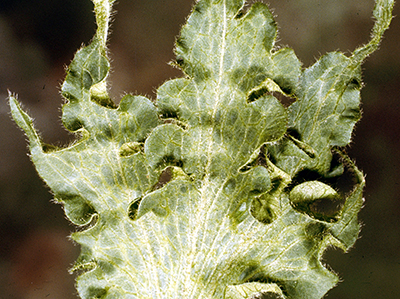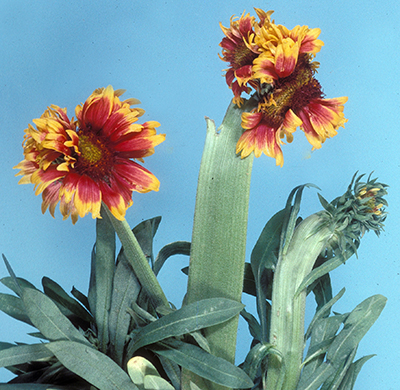Plants with abnormal growths: The interesting phenomenon of plant fasciation
Plant fasciation can cause strange growths on stems and flowers, but can easily be pruned out.

Occasionally, gardeners will find a plant that is displaying very strange growth on a portion of the plant. The stem is not round but flattened and wide with ribs or has a flower that looks like two flowers pushed together like twins. Or, the flattened stem is growing in a spiral shape. The plant could be a woody ornamental like a tree or shrub, or a perennial or annual plant, but it is obvious the growth is far from normal. Michigan State University Extension horticulture educators and Master Gardener hotlines receive periodic calls about weird growths on plants and what causes them.
With any kind of strange growth, the first thing to do is eliminate the possibility that the odd leaves or stems were caused by a light dose of weed killer or herbicide. Lawn herbicides that contain 2-4,D leave grasses untouched, but kill broadleaved plants in lawns. However, when a small amount drifts onto a broadleaf plant, it can cause the new growth to take on a bizarre appearance. Leaves are twisted or pig-tailed, thickened and stiff, almost like rigid plastic. Sometimes, tissue is rippled or rolled. There may also be browning to leaf margins or the entire leaf.

2-4,D damage. Photo by Clemson University – USDA Cooperative Extension Slide Series, Bugwood.org
There are a small number of plants, however, that are obviously deformed, but do not exhibit herbicide damage. These plants look different. Fasciation is described as abnormal fusion and flattening of plant organs, usually stems, resulting in ribbon-like, coiled and contorted tissue. The growing tip or apical meristem of the plant, which normally produces cylindrical tissue, instead becomes elongated perpendicularly to the direction of the growth or it splays out to the sides. Fasciation could cause plant parts to increase in weight and volume. There is often a concentration of leaf or flower buds in the area with fasciation. Consider it a plant mistake.

Tickseed showing fasciation symptoms. Photo by Department of Plant Pathology, North Carolina State University, Bugwood.org
There are a number of possibilities as to why fasciation occurs that relate to hormonal, genetic, bacterial, fungal, viral and environmental causes. It could be any one of several reasons and none are within the range for the smart gardener to repair. However, those same smart gardeners will realize they just have to prune out the offending stem and the problem is solved in almost every case. As the plant continues to grow, there are no more plant mistakes.
Plant fasciation is one of the mysteries of the garden, but be a smart gardener and remove the odd growth. If nothing else, fasciation is fascinating.



 Print
Print Email
Email